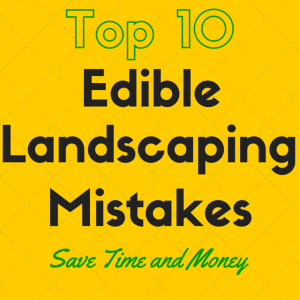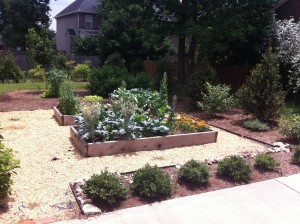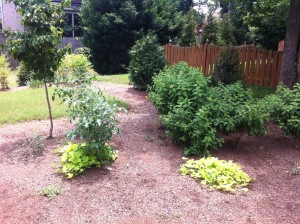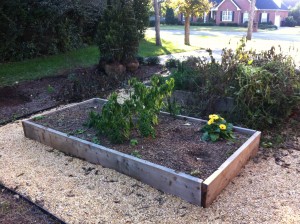 You’re new to growing stuff, right?
You’re new to growing stuff, right?
Well, I’m not. And I got here through trial and error. It’s painful and frustrating. But I’ve made every one of these mistakes (some more than twice)!
Purchasing Mistakes
Buying edible plants at the garden center, taking them home, and parking them in a sunny spot, never to install. SO many plants die this way. Get them in the ground quickly. I know, it’s fun to buy, but when you get home, make the extra effort and install quickly. If you have to wait, keep them moist and in the shade.
Buying/Planting too much at one time. All the fruit or veggies will be ready at the same time. Stage your planting interval over several weeks if you’re planting more than a few at a time. The pros plant for several weeks straight to have a consistent harvest. Don’t buy all your plants at once if you’re new.
Edible Landscape Design Mistakes
Trying to grow edibles in the shade. You need sun and a lot of it. 6+ hours of direct sunlight to have success.
Planting too close together. Read the plant tags. It doesn’t look like it, but your plants are going to expand to the recommended size. More space means a healthier plant with fresh air and more room for roots to grow.
Not keeping cats/dogs/rabbits away from your edibles. Sometimes a hardware cloth fence is necessary. I use raised beds made from 2″x8″ cedar boards. This keeps the rabbits from eating my lettuce and cabbage.
Using pressure (chemical) treated wood for a raised bed. Use untreated wood products. The chemicals that keep pressure treated pine from rotting can leach into the soil and harm you when you eat your plants. Two better options: Cedar is rot-resistant, but expensive. Pine is inexpensive and easy to replace after a few years. Try both!
Maintenance Mistakes
Not harvesting your veggies/herbs/fruits when they’re ready. I have a confession to make. I always let my plants get out of hand. The veggies are ready to be picked and I procrastinate. Every year. Maybe it’s just that I like to grow and look at pretty things. Or maybe I’m just tired from working all day and don’t want to toil more. Or maybe I know I have to cook a meal with my fresh produce! You’ll have several days to weeks before this becomes a problem. Get ready to reap the harvest! Maybe this is just a unique problem I have…
Watering Mistakes
Not watering consistently. Set a reminder on your phone. Make it daily and disregard it if it has rained. Read the next step to make sure you’re not overwatering.
Not checking the soil moisture with your finger. That’s all you have to do. If it’s wet, let it be. If it feels dry, irrigate to soak then allow to dry. Extra credit: If you’re growing in a container, you can lift the container to feel the weight.
Not leaving a hose nearby. Nothing screams “garden chore” like dragging hoses around. Heavy hoses will break your tender plants too. Be careful dragging. Also, put a hose wand (or valve) on the end to turn on/off water easily.
Soil or Growing Media Mistakes
Get a soil test BEFORE you’re ready to plant. The test will tell you exactly how much fertilizer to add. Too much fertilizer wilts plants because it contains salt. Pros do soil tests, you should too!
Not knowing your soil pH (get a soil test). If the soil is too acidic, the lettuce will taste bitter. Ask me how I know. Add limestone to acidic soil. Most herbs/veggies love pH above 6.0. Blueberries like very acidic soil so you may need to add sulfur.
Just Get Started
Don’t worry too much about failing. It’s going to happen. But these are the most expensive and time consuming mistakes. Avoid these mistakes and you’ll be well ahead of the pack. Did you notice I gave you 12 mistakes instead of 10?







